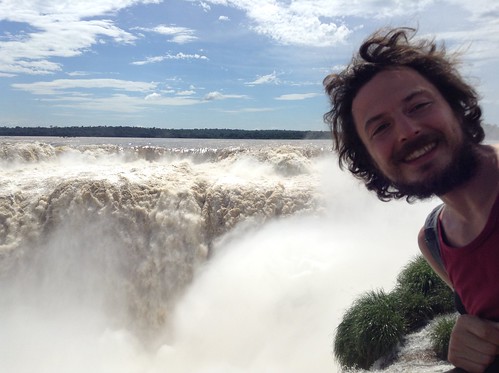
Would you say this waterfall is ótimo or excelente? The answer might depend on what side of the falls you’re standing. That’s because this waterfall is known by the Portuguese moniker Cataratas do Iguaçu in Brazil and the Spanish name Cataratas del Iguazú in Argentina, as it forms the international border of the two countries.
By measure of water-flow, it’s the world’s fourth-largest waterfall, like four-times as watery as Niagara Falls (which forms the international border of Canada and the US). By measure of “curtain-width,” it’s just behind Victoria Falls (on the border of Zambia and Zimbabwe). But only at this watery border will an American hit visa troubles if he or she wants to see the whole of this World Heritage Site, as I just reported in an article for Fusion.

Because of America’s onerous visa restrictions with Brazil, it’s leaps and bounds more difficult to see the Cataratas do Iguaçu in Brazil. Take the case of Tom Pelisson, a New Englander who I bumped into on the Argentine side of the waterfall. While it had been easy for him and his fiancé to get into Argentina with an online application and minimal fee, they hadn’t wanted to waste time making a mandatory in-person visa visit to a Brazilian embassy in the US and then paying $160 for an entry visa. (Brazil justifies the fee as an act of “reciprocity” because of similar US levies on Brazilians).
“It’s just not worth it,” Tom (of Bristol, RI) told me of the hassle to get into Brazil. “And how many waterfalls can you really look at, anyway?”
Wise words from Tom, and in that spirit I’ll also try to limit the number of photos from when I visited the waterfall on January 7. I should actually say, “from when I visited the waterfalls,” because Iguazú really comprises many waterfalls pouring down from the Paraná Plateau. It’s more like a water canyon, and it more than earned its place in the movie “The Mission” starring Robert De Niro, including one scene of a priest riding over the waterfall on a cross.
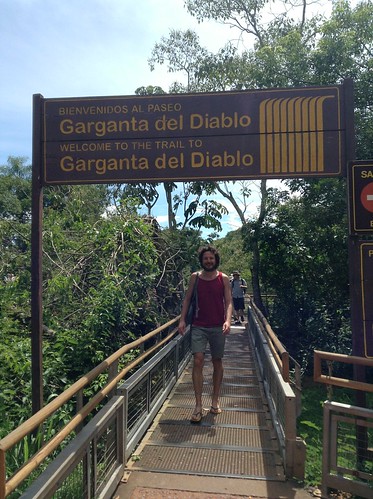

My first few pics are of the central falls known as Paseo Garganta del Diablo (the Devil’s Throat), which sounds like something from a Stephen King novel. And some people really do see this as a mystical, magical place. I met another American who sees the waterfall as a kind of primal baptism of “negative ions” that heal the body.
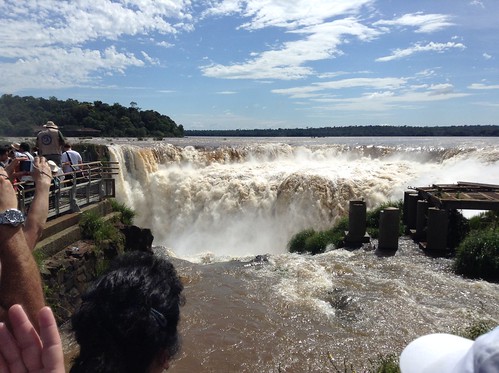
The circular Devil’s Throat curves so tightly, and the water pours so ferociously, it’s almost like the Earth is swallowing itself. From there, I climbed down a series of walkways and paths to where speedboats were whisking tourists around the falls. I hopped in one of the boats, and it was reminiscent of a ride I took on the Maid of the Mist at Niagara Falls years ago.
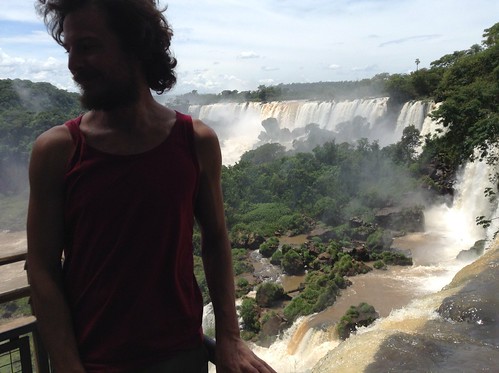
Pedestrian walkways wind all around the waterfalls, and while strolling around I met a retired Canadian geologist whose PhD dissertation had been that dinosaurs went extinct in part from the disappearance of bee pollen. She also described herself as an avid bird-watcher, so it was fitting that noticed a bird chirping loudly from a nearby branch. She must have sensed that the bird was angry at us, because she had the mind to look down and notice a bird’s nest directly below our feet. And inside that straw nest was a baby bird (photo below), its tiny orange beak pointed up and opened wide, ready for the tourists to drop their snack crumbs.

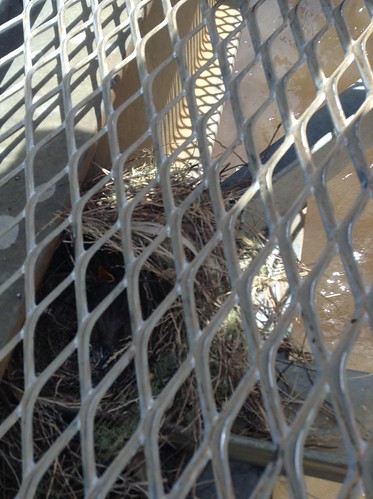
While walking around, I also spotted a wild toucan in a tree with a beautiful rainbow-colored beak. In that moment I also realized that a toucan’s body is not blue, as I had been misled to believe for the past 32 years by the Fruit Loops mascot Toucan Sam.
Like Tom said, even at Iguazú you can only stare at water for so long. At which point many tourists start feeding the coatis, which is a long-nosed raccoon-like scavenger that has infested the area. They’re ever-ready to snatch a fallen cookie or fruit. In the below photo, the coatis are ripping savagely into an apple.

